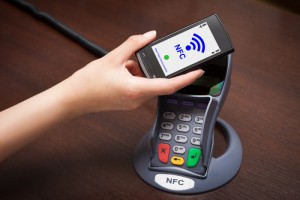It’s a global market for NFC payments
 Near Field Communications (NFC) technology has been slowly developing in the background of the payment systems industry for about ten years now. Today, with the rise of the smartphone, it is beginning to make an appearance in the retail market by way of mobile phone payments. This amalgamation is expected to make the market growth rate soar with figures predicted to reach $180 billion annually by 2017. This is according to a Juniper Research’s recent report on NFC Retail Marketing & Mobile Payments (Business Models & Forecasts 2012-2017).
Near Field Communications (NFC) technology has been slowly developing in the background of the payment systems industry for about ten years now. Today, with the rise of the smartphone, it is beginning to make an appearance in the retail market by way of mobile phone payments. This amalgamation is expected to make the market growth rate soar with figures predicted to reach $180 billion annually by 2017. This is according to a Juniper Research’s recent report on NFC Retail Marketing & Mobile Payments (Business Models & Forecasts 2012-2017).
Alongside mobile ticketing and mobile coupons, NFC payments are seen as one of the most important mobile applications driving the mCommerce market today. At the moment if you look at where the most NFC transactions take place the spending power lies with the Japanese and Korean markets, but the rise of a mobile phone payment channel should lead to growth on a global scale. In fact, Juniper Research suggests that by 2017 Western Europe will see 35% of transactions and North America 30%, leaving only 26% in the Far East & China.
So, what’s slowing down the roll out of NFC payments?
Basically we’re just not quite ready and our hesitancy is putting acceptance levels of NFC payments on the low side. The concept of a mobile wallet, a user’s willingness to use the service and the retailers’ ability to offer the payment method in store all need to be in place before a full-scale launch can happen. Instead wallet wars are taking place as banks, credit cards and prepaid accounts struggle to get a hold on the virtual wallet. A user’s requirement of a single, open wallet is yet to be met.
For users there are several factors. It’s a case of being familiar with NFU technology, something providers are actually working on through the use of device connectivity and information tag reading; the payment process needs to be as if not more user friendly than a contactless payment card; payment limits need to be unrestrictive, and perception of security levels need to be raised so users feel confident that their transaction is secure. What’s more, the basic issue of customer care needs to be resolved and procedures put in place in terms of fault ownership so that if an NFC payment fails at the point of sale, the user knows whom to contact. Is it the retailer, the phone-network provider, the mobile wallet issuer or the bank? There are also couple of concerns remaining around security issues regarding the implementation of the latest security standard when the technology is deployed.
Retailers however are more constrained by investment costs. Fortunately this concern is already being resolved as new POS terminals are shipping with contactless capability as standard. The hurdle of convincing retailers that the NFC payment is part of their successful business model is another matter and yet to be achieved.
Nonetheless with the likely hood that we will be experiencing the benefits of NFC mobile phone payments soon, let’s look at the features that are attracting the retailers and users to this technology:
- NFC mobile payments offer a fast, elegant and simple way for the user to pay for things, which it is difficult for other mobile technologies and channels, e.g. SMS or barcodes, to match.
- A simple physical tap is all you need to use an NFC app, rather than having the hassle of opening up a mobile application. One tap activates the app and a second tap completes the transaction.
- With NFC mobile payments retailers can offer another service to customers. Mobile web and SMS already communicate with customers, and now they can shop and pay by mobile.
- From a technical point of view, the degree of accuracy in determining the mobile user’s position is far greater using NFC than GPS, especially inside buildings.


No comments yet.